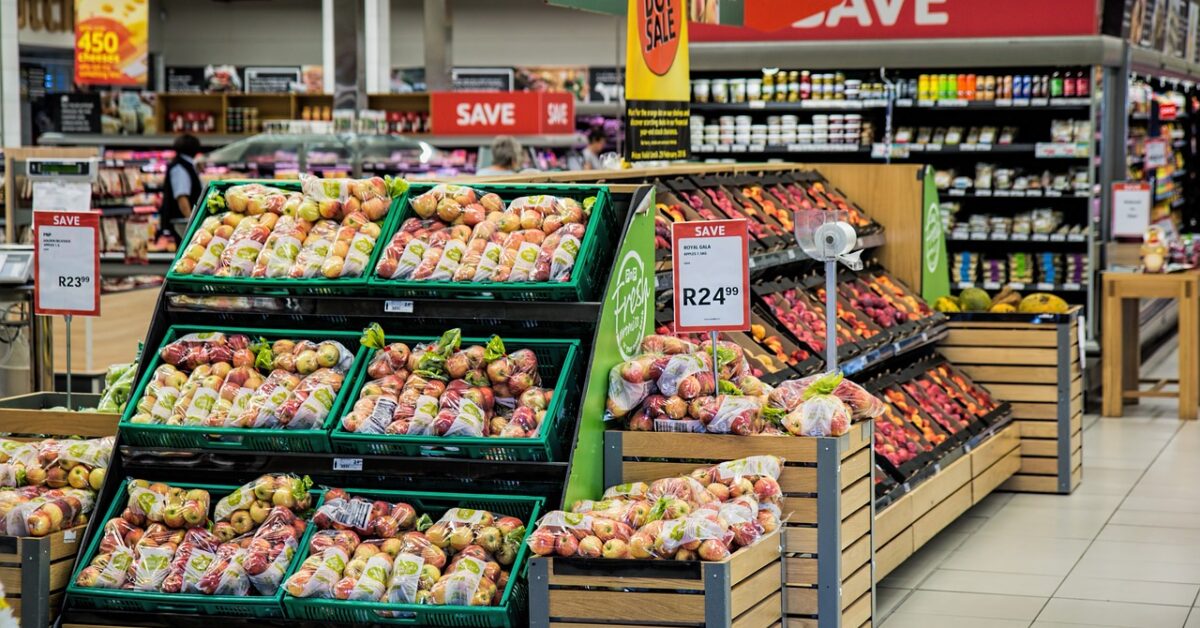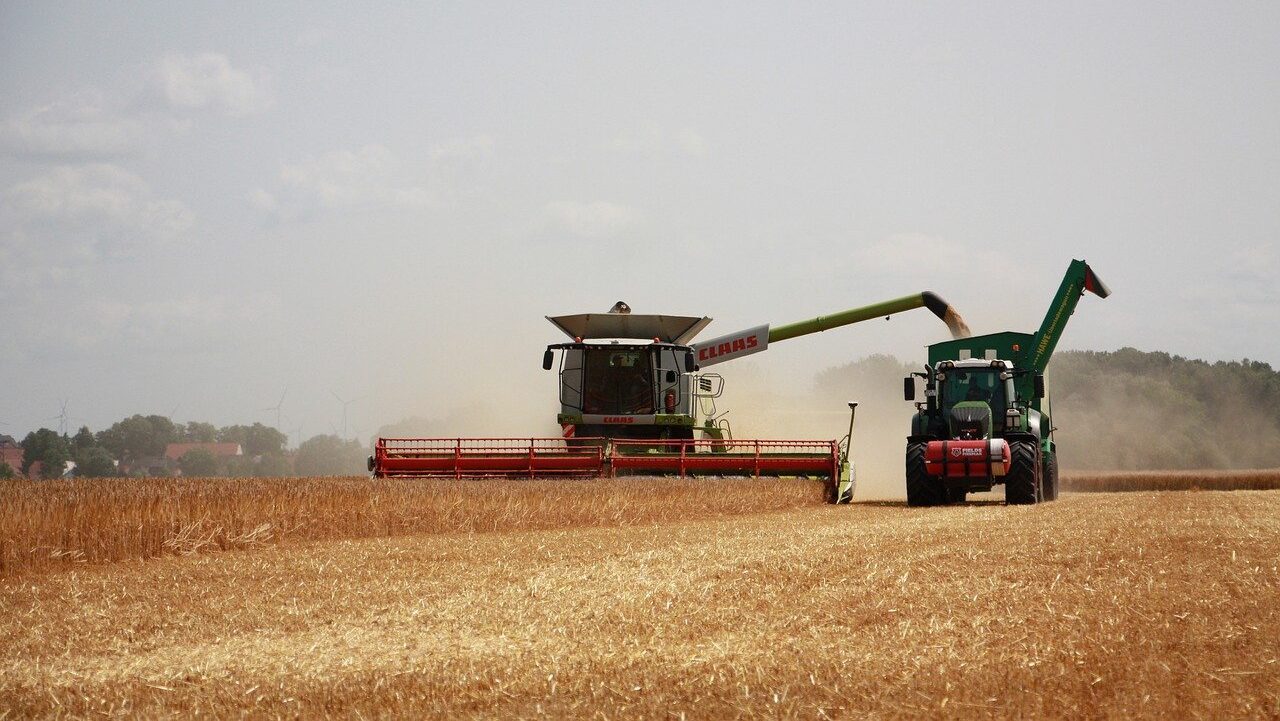This article was originally published in the Catholic Rural Life Magazine Winter 2018 and written by Morgan Smith.
Wastefulness may be a sin against charity to our fellow man; but, in the long view of things, we are sinning against the charity of God himself. Each food we waste has cost the soil of our country much to bear. That soil was given to us by God as a legacy. If we squander it, we are failing in our stewardship and shall be called to account. Farmers are not alone in abusing God’s gift of the soil; every city dweller who throws away what might be used is guilty, too. Because much of our Catholic society is so far removed from the soil, we lose in both understanding and appreciation of Christ’s use of parable and symbol. We no longer commonly speak his language nor know his idiom.
From Cooking for Christ, by Florence S Berger (1949)
While shopping for a new dining room table online, I was struck by the words of an interview I had done with an amazing couple: he a theology professor, and she a teacher. I had no idea while sitting in their living room that afternoon drinking organic tea, that the questions they proposed would be provoking me all that evening.
Where was the table made? Who made it? Where did the wood come from? Was buying a cheaper table acceptable, if it meant being made in a factory by underpaid, mistreated workers? Or made with materials that came from exploitation of the land?
In preparing my dinner, their words rang even stronger: Am I wasting my food? Where did this food come from, exactly? Whose hands have touched it from farm to kitchen?
That afternoon, Catherine and Robert introduced me to a concept of tithing that I had never heard before. They call it, intentional purchasing. The idea behind intentional purchasing is the fact that we need to act upon our God-given responsibility to the others in our community and to all of creation. We need an increased awareness of what (and who) we are supporting with our money. The choices we make about the things we buy have direct effects on the community. This is not just a high and mighty, pious argument! It is a very concrete and practical one. What is the value of the tithe? What is the value of the things we spend our money on?
Robert explained passionately:
It is a spiritual practice to be aware of the other and to move outside of myself. Intentional purchasing calls me to consider the ways my money impacts other people. When we become aware that a lot of fac tory farmed meat, for example, is produced in ways that are damaging to the environment, to the animals, and that immigrants are often employed at low wages because it is difficult work, we must change our behavior away from supporting these operations financially.
Intentional purchasing helps the consumer appreciate the pro duction side of food, which is something we have forgotten and ignored over the past 30 years. When we purchase from the farmer and learn how he grows our food, we start to appreciate the effort that goes into the food we eat: we enter into a relationship, we enter into a community. The choice to make “intentional purchases” puts the use of our money towards generosity. Robert explained: “We are supporting people who are conserving traditional ways of life, conserving the environment, and who are growing food that is more nourishing for our bodies. We are supporting an enriched community in relationship with God and the land, rather than giving our money to big corporations who might abuse both land and worker.”
It took the couple ten years to arrive at this conclusion—and a lot of practice, learning and adjustments along the way. As I sat in their living room, they recount ed the way it began. They had long had a passion for ecology and the care of God’s creation, and one day it occurred to Catherine that their “care for creation” should carry over into their kitchen. She started to look at the food she was buying and wondering where it came from and who produced it.
They started out their married life, she said, “very poor and had major student loan debt. At one point, we felt like we had no money. Shopping at a place like Sam’s was part of that life. We are told that buying in bulk saves us money, but what I found that when I was buying large volumes in bulk, 40% would be tossed in the garbage. I wasn’t as thoughtful with it, because I knew I had more and could get more easily.”
Robert said, “There is an impulse to get as much stuff as you can for cheap, but this is flawed logic in terms of generosity. If you see what you have as a gift, you are less likely to waste it.” Catherine finished, “Good food is not to be wasted, and this is in the spirit of gift.” She elaborated, “When I purchase less, it is much closer to what I need, and this helps me to recognize what I actually need, versus what the sale at the store says I need.”
To clarify, I asked: “Why buy ‘sustainable’ food, isn’t it more expensive?” (Such as food that is grown on smaller, local farms.) Robert replied, “The product quality is more superior: flavorful, nutritious and satiating.” You get what you pay for.
Catherine explained how the cost helps to put value into perspective: “This makes us grateful for the enormous value of the product. Because of the higher price, we need to purchase less. When we purchase less, we make sure we use it well, and when we are careful about how we use it, we cut down on waste.” She continued with a smile, “Now every scrap of food is very thoughtfully ‘curated.’”
Robert inputted with passion, “When we buy the cheapest item, pretty soon the family that was producing the product thoughtfully, goes out of business. We need to give witness to our values and see more than an exchange, but a relationship!”
The approach of generosity that Robert and Catherine are proposing helps to put a person in the economic system and into the community, and they see tithing as a principle of practice in the marketplace. This means changing our habits of consumption. Robert said, “We cannot expect producers to change their ways if the consumers don’t change their own ways first. Maybe you don’t have the capacity to write checks to your parish, but when you enter the grocery store, you can make good decisions.”
A problem that often confuses us in a discussion like this is the way that our culture defines “the good life,” or the value of “things.” Robert explained: “Our generosity increased significantly from tithing, budgeting and living within our means. The pressure in this world is to live beyond our means: borrow, live in debt, etc.”
He went on: “Tithing requires us to say: What is our income? What are our expenses? Where does it go? Who does it go to? Who is really getting my money?” Catherine added, “We discovered that our first responsibility was to stop living a debt driven life and run the household according to our means.”
I jokingly asked, “Isn’t buying from Sam’s ‘living within your means’?” Robert replied with a wry smile, “Only if individual packs of Frito’s are the good, the best you can do.” He continued with a more serious tone, “Living in your means is going towards the good: the end. As consumers, we require a conversion in terms of our ‘ends.’ What is the greater good?”
Catherine spoke up, “It’s also about living simply.” Robert went on quickly, “Yes! Don’t pay for what is unnecessary. Buying Frito’s or anything else from Sam’s means that you are buying pack aging: plastic, boxes, paper, printing. You are also paying for environmental impact penalties, advertising, shipping…”
Catherine asked, “Is it within my means to buy hamburger patties for my backyard BBQ? We can’t afford grass fed beef for everybody, but we have the mentality that ‘everybody needs a hamburger at the BBQ.’ Maybe we need to say ‘soup and bread’ party instead! This is living within our means and not according to popular notions.”
She continued, “We need to choose to define what ‘the good life’ is in noncommercial terms— in human terms: values, community, Church. As Catholics, let’s redefine ‘the good life.’ Let’s de fine the good life as a life of valuable gifts that are well cherished and well used.”
As we finished the interview, I was struck by the fact that this couple is not “all talk.” Their passion is very concrete and real— they are really living out what they propose. Their generosity is apparent in their manner and way of speaking, and it is contagious.
A few days later, I resumed my search for a new dining room table and realized that my values had changed. I noticed that the new tables I could afford were manufactured in countries known for mistreating factory workers. They were also made out of mostly composite materials. I had no desire to spend my money on this. I had a thought to look for a locally crafted table made from reclaimed wood, but there was just no way I could pay for what that would cost. So, I compromised: I went to my favorite local vintage shop. I bought a beautiful antique maple table, which was most likely hand crafted, and I love it. Even in this small gesture, I can see that I have grown in generosity by taking the time to think about my purchase, and I am very happy with my first big “intentional purchase.”







